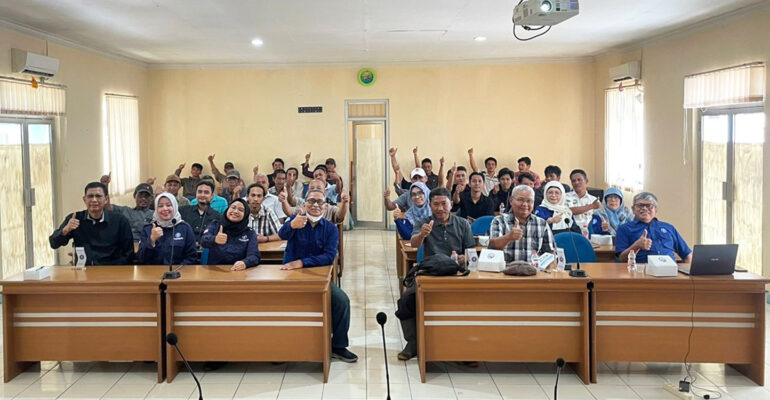IPB University Develops Patin Fish Breeding System, Technology, and Management in Patin Village, Subang

The IPB University Aquaculture Team which is a lecturer of the Department of Aquaculture (BDP), Faculty of Fisheries and Marine Science (FPIK) held training and pilot systems, technology, and management of catfish breeding in Patin Village, Subang Regency, West Java (28/9).
The activity was part of the community service of the IPB University 2024 Dosen Pulang Kampung (Dospulkam) program. In this activity, the lecturers tried to participate in solving the problems faced by the community by utilizing the relevant expertise of the academic community and the utilization of appropriate technology.
The team of lecturers involved were Dr Tatag Budiardi as the team leader, with Dr Irzal Effendi, Dr Yani Hadiroseyani, Prof Iis Diatin, Dr Apriana Vinasyiam, and Belinda Astari, MSi as members. This activity also involved four final-year undergraduate and master’s students.
The training activity with the theme ‘Revitalization of Patin Fish Breeding’ was held at the Subang North Region Marine and Fisheries Service Branch Hall. This training theme was raised amidst the declining technical performance and management of the patin fish breeding business in the region.
The training involved 30 participants from 3 Fish Farmer Groups (Pokdakan) in Kampung Patin, Sukamandijaya Village, Ciasem District, Subang Regency, West Java. They are members of Pokdakan who are still actively managing the patin fish breeding business.
The event was attended by members of the West Java Provincial Marine and Fisheries Service, the Subang Regency Fisheries Service, and the Chief of the Subang Northern Region Marine and Fisheries Service Branch.
In his speech, Dr Tatag Budiardi stated that Dospulkam is a flagship program of IPB University to bridge the results of the latest technology produced on campus to be applied in the community. For this reason, good synergy is needed between the campus and the local government and the community who apply knowledge and skills in their business.
The lecturers and students will continuously provide assistance. From the discussion, it is expected that there will always be feedback in the form of problems that must be researched so that the results can be applied in the nursery business to produce better production.
Agus Sugiono, Chief of the Marine and Fisheries Service Branch of the Northern Region of Subang, highly appreciates Dospulkam’s activities because in recent years training and mentoring activities have not been able to run well due to changes in main tasks. Likewise, Ade Tatang, representative of the Head of the Subang Regency Fisheries Service, appreciated the training provided by the IPB University Aquaculture team. Furthermore, it is expected that the team can assist in increasing catfish production in West Java on an ongoing basis.
Addressing the Problem of Patin Village
Kampung Patin is one of the production centers for catfish seeds that are ready to be stocked in enlargement ponds. Some of the problems found by breeders include poor larvae, inadequate water quality for fish survival and growth, and the presence of fish diseases.
“To answer these problems, we chose relevant materials, namely the latest systems and technologies that can be applied to the hatchery business, water quality and fish feed management, larval and fry management, fish health management, as well as marketing management, business and institutional analysis,” said Dr Tatag.
In the hatchery management material session, the IPB University lecturer team delivered solutions to problems of mortality and seed quality, including through improving larval quality through broodstock management, water quality management, larval and seed health management through the application of herbal ingredients (phytopharmaca). In the aspect of feed management, the solutions provided include the utilization of natural food Rotifera, Moina, and Daphnia.
The material session was followed by a discussion that led to solutions to problems faced by participants in managing catfish hatcheries. The training was closed by handing over a package of water quality measurement equipment and probiotics, as well as how to use them. (*/Rz) (IAAS/RUM)



